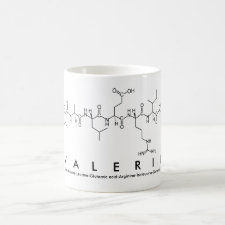
Authors: Le Moullec S, Truong L, Montauban C, Begos A, Pichon V, Bellier B
Article Title: Extraction of alkyl methylphosphonic acids from aqueous samples using a conventional polymeric solid-phase extraction sorbent and a molecularly imprinted polymer.
Publication date: 2007
Journal: Journal of Chromatography A
Volume: 1139
Issue: (2)
Page numbers: 171-177.
DOI: 10.1016/j.chroma.2006.11.022
Alternative URL: http://www.sciencedirect.com/science/article/B6TG8-4MFKD7R-4/2/2e23df26d9cffda09558be0d86710e9a
Abstract: The analysis of alkyl methylphosphonic acids (AMPAs) constitutes an important subject for verifying the compliance to the Chemical Weapons Convention (CWC). Indeed, alkyl methylphosphonic acids are the degradation products of V and G nerve agents such as VX, sarin or soman. Lowering the limits of detection of analytical methods for complex aqueous matrices implies the introduction of concentration and clean-up steps in the whole analytical process. Therefore a molecular imprinted polymer (MIP) has been previously developed for the selective extraction and the concentration of the alkyl methylphosphonic acids. Unfortunately, the selective retention process on this MIP has involved the development of hydrogen bonds and so does not allow the direct percolation of aqueous samples. A change of solvent is then necessary and can be performed using solid-phase extraction (SPE) with conventional non selective hydrophobic sorbents. Two polymeric sorbents, Oasis HLB and HR-P resins, were selected for their high specific surface area. The extraction recoveries obtained on both sorbents were compared and the Oasis HLB sorbent was further selected and used for the percolation of acidified aqueous samples. An optimised SPE procedure was then applied to concentrate an aqueous soil extract spiked with isobutyl methylphosphonic acid (iBMPA) and cyclopentyl methylphosphonic acid (cPMPA) that was further cleaned-up by passing through the MIP. The resulting LC-MS full scan chromatograms highlight the clean-up effect of the SPE-MIP association by the removal of the matrix substances and the preservation of 95% of the compounds of interest
Template and target information: alkyl methylphosphonic acids, AMPAs, isobutyl methylphosphonic acid, iBMPA, cyclopentyl methylphosphonic acid, cPMPA
Author keywords: Solid-phase extraction, Molecularly imprinted polymers, organophosphorus compounds, environment, Phosphonates, nerve agents



Join the Society for Molecular Imprinting

New items RSS feed
Sign-up for e-mail updates:
Choose between receiving an occasional newsletter or more frequent e-mail alerts.
Click here to go to the sign-up page.
Is your name elemental or peptidic? Enter your name and find out by clicking either of the buttons below!
Other products you may like:
 MIPdatabase
MIPdatabase









